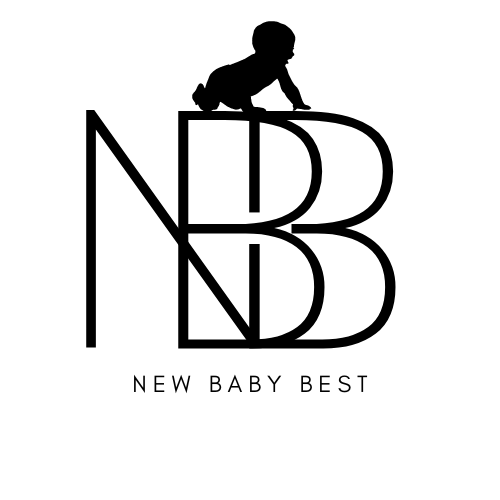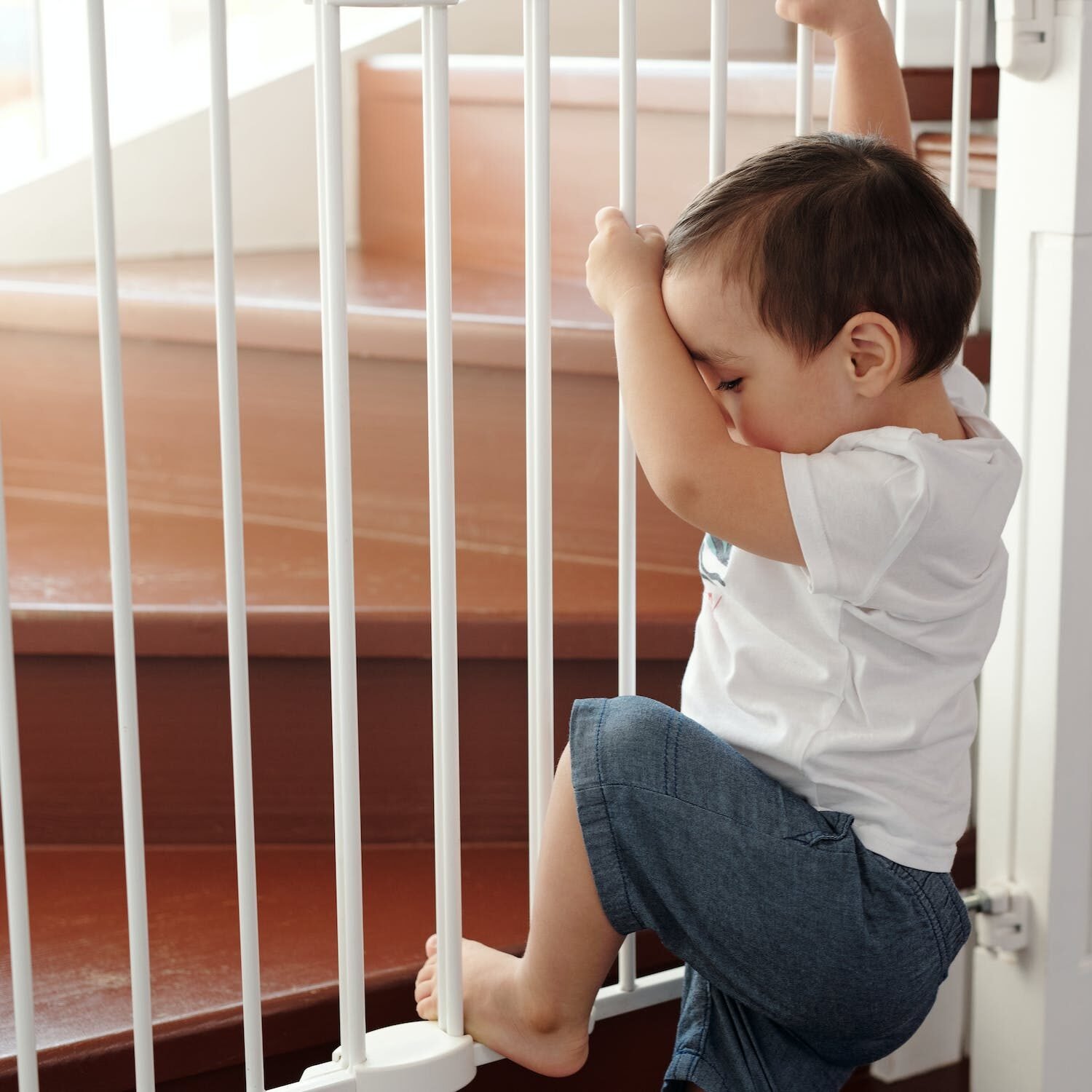You’ve just welcomed a new addition to your family and the safety of your little one is now your top priority. As your baby starts to explore and discover the world around them, it’s crucial to create a safe environment within your home. But where do you start? In this article, we will provide you with practical tips and advice on how to effectively baby-proof your home, ensuring that your little bundle of joy can roam freely and safely. From securing furniture to covering electrical outlets, we’ve got you covered with all the necessary steps to ensure a secure and worry-free environment for your baby.
Identify Potential Hazards
Assessing Each Room
When baby-proofing your home, the first step is to assess each room for potential hazards. Take a walk through your house, imagining yourself at your baby’s level. Look out for anything that could pose a danger, such as sharp edges, choking hazards, or heavy furniture that could be tipped over.
Locating Sharp Objects
One of the main concerns when baby-proofing is to protect your little one from sharp objects. Take note of any furniture with sharp corners or edges, such as coffee tables or bookshelves. These can easily cause injuries if a curious baby happens to run into them. It’s essential to address these hazards by covering them with corner guards or applying edge bumpers.
Securing Heavy Furniture
Another significant hazard in your home is heavy furniture that can topple over. Babies are naturally curious and tend to pull themselves up on anything they can grab onto. It is crucial to secure heavy furniture, such as bookcases, dressers, or entertainment centers, to the wall using anchor straps. This will prevent any accidents and ensure the safety of your little one.
Protecting Electrical Outlets and Cords
Installing Outlet Covers
Electrical outlets are among the most dangerous parts of your home for a curious baby. To prevent any accidents or electrical shocks, it’s important to cover all unused outlets with outlet covers. These covers are readily available at baby supply stores and are easily installed. They provide a protective barrier, ensuring that your child cannot stick their fingers or any other objects into the outlets.
Using Cord Protectors
Electrical cords can be a major tripping hazard for babies who are just learning to walk or crawl. To eliminate this danger, use cord protectors to cover any exposed cords around your home. Cord protectors can be attached to walls or furniture, keeping cords out of your child’s reach and reducing the risk of them getting tangled or tripping over them.
Tying Up Loose Cords
In addition to using cord protectors, it’s also important to tie up any loose cords. Take the time to organize and secure cords behind furniture or use cord clips to bundle them together. Keeping cords out of sight and out of reach will not only prevent accidents but also create a tidy and clutter-free environment.
Securing Cabinets and Drawers
Installing Cabinet and Drawer Locks
Cabinets and drawers can be a treasure trove of potential hazards for curious little ones. To prevent accidents, it’s essential to install cabinet and drawer locks. These locks will ensure that your child cannot open them and access potentially dangerous items such as cleaning products, sharp tools, or medications. Ensure that all cabinets and drawers within your child’s reach are secured with appropriate locks.
Removing Hazardous Items
While installing locks is essential, it’s also crucial to remove any hazardous items from lower cabinets and drawers altogether. Go through your kitchen, bathroom, and any other areas accessible to your little one. Remove items such as cleaning supplies, knives, small appliances with removable parts, or anything else that could be harmful if ingested or mishandled.
Gating Stairs and Doorways
Selecting the Right Baby Gate
Stairs and doorways can be dangerous areas for babies who are just beginning to explore their surroundings independently. Installing baby gates is a great way to restrict access to these potentially hazardous areas. When selecting a baby gate, make sure it is sturdy and securely fits the opening. There are different types of gates available, including pressure-mounted gates and hardware-mounted gates. Consider factors such as the width of the opening, the material of the gate, and the ease of installation when choosing the right gate for your home.
Installing Baby Gates
Once you have selected the appropriate baby gate, it’s time to install it. Follow the manufacturer’s instructions carefully to ensure proper installation. Remember to place gates at both the top and bottom of staircases to prevent falls. Make sure the gate is securely fastened and can withstand the pressure a baby might exert while pushing or pulling on it.
Covering Sharp Corners and Edges
Using Corner Guards
Sharp corners and edges can pose a serious risk to babies who are just starting to explore their surroundings. To prevent any bumps or injuries, use corner guards. These soft, cushioned protectors can be easily attached to furniture corners or edges, providing a protective barrier between your child and any potential hazards. Make sure to cover all sharp corners, including those on tables, countertops, and other furniture.
Applying Edge Bumpers
In addition to corner guards, it’s essential to apply edge bumpers to any furniture with long, sharp edges. Edge bumpers are foam or rubber strips that can be secured along the edges of tables, shelves, or other furniture pieces. These bumpers soften the impact in case your child accidentally runs into them or falls against them, preventing any serious injuries.
Securing Appliances and Electronics
Anchor Large Appliances
Large appliances such as refrigerators, stoves, or washing machines can be hazardous if not properly secured. A curious baby could potentially open doors, causing the appliance to tip over. To prevent any accidents, it’s important to anchor large appliances to the wall or floor using appliance straps or brackets. This will ensure that appliances remain stable, even if a child tries to climb or pull on them.
Secure TVs and Other Electronics
Flat-screen TVs and other electronics can also pose a danger if they are not properly secured. Mounting the TV on the wall is the safest option, but if that is not possible, make sure to use a sturdy TV stand or anchor the TV to the furniture it is placed on. Additionally, secure any other electronics, such as game consoles or sound systems, to prevent them from being pulled down or knocked over.
Blocking Access to Hazardous Areas
Childproofing the Kitchen
The kitchen can be a particularly hazardous area for babies and young children. Take steps to childproof this space by installing stove knob covers to prevent accidental burner activation. Use childproof latches on oven doors to prevent access to hot surfaces. Keep sharp objects, glassware, and toxic cleaning supplies out of reach, either by locking cabinets or storing them in higher cabinets. Make sure to secure the trash can with a lid that is not easily opened by a child. Finally, keep small appliances, such as toasters or coffee makers, unplugged and stored away when not in use.
Restricting Access to the Bathroom
The bathroom is another area with potential hazards that should be addressed when baby-proofing your home. Install toilet seat locks or toilet lid locks to prevent drowning hazards. Keep medications, cleaning products, and personal care items out of reach or locked in medicine cabinets. Be wary of any electrical appliances used in the bathroom, such as hairdryers or electric razors, and store them safely out of reach. Always supervise your child closely in the bathroom.
Ensuring Safe Sleep
Creating a Safe Crib Environment
Your baby’s crib should provide a safe and secure sleeping environment. Ensure that the mattress fits snugly in the crib with no gaps that could trap the baby. Remove any pillows, stuffed animals, or blankets from the crib, as they can increase the risk of suffocation or strangulation. Use a fitted sheet that is properly secured to the mattress. Avoid using crib bumpers, as they have been linked to suffocation and should be eliminated from the crib.
Beware of Loose Bedding
When it comes to safe sleep, it’s important to be mindful of loose bedding. Blankets, pillows, and stuffed animals can pose a suffocation risk to babies. Use sleep sacks or wearable blankets instead of loose blankets to keep your baby warm while they sleep. Make sure there are no cords or ties on crib mobiles that could accidentally wrap around your child’s neck. Additionally, ensure that any curtains or blinds in the room have cordless mechanisms to prevent strangulation hazards.
Keeping Small Objects out of Reach
Beware of Choking Hazards
Choking hazards are a major concern when baby-proofing your home. Babies like to explore the world around them by putting objects into their mouths. Take extra precautions to keep small items out of their reach by carefully inspecting every room. Remove any small toys, coins, buttons, or other small objects that could present a choking hazard. Be particularly cautious with items that have removable parts or small batteries, which can be easily swallowed.
Storing Small Items Appropriately
To prevent choking hazards, it’s crucial to store small items appropriately. Use storage containers with secure lids for small toys, craft supplies, or any other small objects that could be swallowed. Keep these containers out of reach or in locked cabinets. Similarly, keep any small items, such as batteries, magnets, or jewelry, stored safely away in drawers or high shelves where your child cannot access them.
Creating a Safe Play Area
Using Soft and Non-Toxic Materials
When creating a play area for your baby, focus on using soft and non-toxic materials. Opt for soft, padded play mats or rugs to create a safe and comfortable surface for your child to play on. Avoid materials that can be easily torn or shredded, as they can present a choking hazard. Ensure that any toys or items in the play area are made of non-toxic materials and are free of small parts that could be swallowed.
Removing Unsafe Toys
Regularly inspect your baby’s toys and remove any that are broken, have loose parts, or are not age-appropriate. Small parts or toys with sharp edges can pose a choking hazard or cause injuries. Ensure that toys are sturdy and well-made to withstand playtime. It’s also important to regularly check for any recalls or safety warnings for toys and promptly address any concerns to ensure your baby’s safety during playtime.
By following these comprehensive steps to baby-proof your home, you can create a safe and secure environment for your little one to explore and grow. Remember that baby-proofing is an ongoing process, and it’s essential to regularly reassess your home as your child grows and develops new abilities. With the right precautions in place, you can have peace of mind knowing that your baby is protected from potential hazards in their environment.

